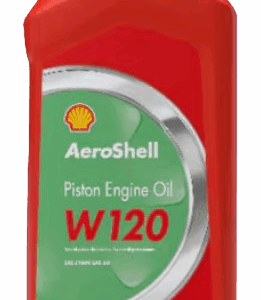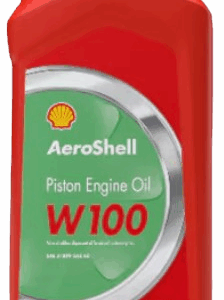AeroShell Oil W 15W-50
Our most advanced aviation piston engine oil – a semi-synthetic blend of base oils integrating ashless dispersant technology and advanced non-metallic anti-wear and anti-rust additive system, providing fast-acting engine protection through oil drain intervals and in all seasons.

Features and benefits
Unbeatable steel corrosion resistance¹
Outstanding Engine Cleanliness²
Temperature versatility
Improved Wear Protection³
Exceptional cold flow performance⁴
Exceptional⁵ shear stability
Specifications & approvals
| Country / OEM | Specification |
|---|---|
| SAE | J1899 Grade Multigrade |
| FAA | AMOC to Airworthiness Directive 80-04-03 R2 p.1b |
| French | DCSEA 262/A (XO-162) |
| Joint Service Designation | OMD-162 |
| Lycoming Engines | Service Bulletin 446E and 471B Service Instruction 1409C |
| Continental Aerospace Technologies | MHS-24 SIL 99-2 |
| Pratt & Whitney | Service Bulletin 1183 |
The TDS and MSDS are in English, but you can find these documents for other countries in the Shell EPC area
.
Video Transcript
-
Title: AeroShell Oil W15W50 Cold Flow Video
Duration: 1:53 minutes
Description:
AeroShell Oil W 15W-50 flows more quickly than competitor oils, even when cold, to protect important parts of your aero piston engine from wear. Watch as 4 piston engine oils are tested for cold flow performance after being stored at -40 degrees Fahrenheit (-40 degrees Celsius).
[Background music plays]
Uplifting and inspirational music
[Animated sequence]
Animation of a fixed-wing piston engine aircraft in a hangar, with engine propellors spinning.
[Text displays]
Shell Aviation
Cold Flow Test
[Dialogue: Narrator]
No one wants an expensive engine overhaul.
[Animated sequence]
Animated graphics showing the piston engine components in motion.
[Dialogue: Narrator]
Oil has a crucial role to play in keeping costs down by protecting your engine from wear. Most wear occurs on startup as pressure builds and the oil flows to where it is needed. That means the speed at which your oil flows is important, especially on a cold day.
[Animated sequence]
Animated graphics showing metal-to-metal contact of engine components, causing abrasive wear on the metal surfaces.
[Dialogue: Narrator]
If your oil fails to flow to where you need it, your engine components may be grinding against each other, metal on metal. One particular area of concern is the camshaft and valve lifters.
[Video footage]
Setup of 4 tubes of oil held by metal structure, pointing diagonally downwards with metal tray under the tubes. A sped-up timer starts running from 0 minutes. The oil in the tubes are flowing out at different speeds. The right most tube with black coloured oil flows out the quickest, followed by the 2nd from right, an amber colored oil. At the 30 second mark, the oil in the left two tubes have yet to flow out from the tube onto the metal tray.
[Dialogue: Narrator]
If worn components need to be replaced, your overhaul will be expensive.
Let’s see how these oils flow when chilled to minus 40 degrees Fahrenheit. Two of the samples are flowing immediately with a good consistency. Meanwhile, the other oils have barely moved. Imagine these oils were in your sump on a cold day. That’s a lot of time for damaging metal-on-metal wear. The oils on the left are formulated with a mineral base oil and have a 20W low-temperature viscosity, whereas the other oils are formulated with a semi-synthetic base oil and have a 15W low-temperature viscosity. The samples on the right are new and used AeroShell Oil W 15W-50. The others are the next most popular multigrade oils.
[Graphics – Text on visuals]
Image of AeroShell Oil W 1W-50 bottle on the right of text
[Full frame title]
To better protect your engine on start-up
[Dialogue: Narrator]
AeroShell Oil W 15W-50 flows when cold to better protect your engine on startup.
[Animated sequence]
Animated graphics showing the piston engine components in motion.
[Title – Text on visuals]
Protective antiwear additive coating
[Dialogue: Narrator]
It also leaves surfaces with a protective anti-wear coating between flights for instant startup protection.
[Animated sequence]
Animated graphics of aircraft flying over snow-covered mountainous landscape.
[Dialogue: Narrator]
Which oil would your engine choose? Don’t get caught out in the cold.
[Title – Text on visuals]
AeroShell
Going above and beyond to keep you protected.
[Dialogue: Narrator]
AeroShell: Going above and beyond to keep you protected.
[Graphics – Text on visuals]
Shell logo
[Text display]
aeroshell.com
[Background music ends]
Applications
AeroShell Oil W 15W-50 is intended for use in certified four-stroke (four-cycle) aircraft piston engines. AeroShell Oil W 15W-50 is superior to single grade oils in almost every application. It offers easier starting, better lubrication after start-up, reduced wear, reduced corrosion and rusting, and improved cleanliness, with oil pressures and temperatures equal to that of single grade SAE 50 oils at fully warmed up conditions.
The anti-corrosion additive system is designed to prevent rust or corrosion in all types of aircraft piston engines. In comparative testing of camshaft rusting under high humidity conditions, AeroShell Oil W 15W-50 was almost entirely rust free while camshafts conditioned on other oils showed heavy rusting on some cam lobes and bearing surfaces.
These results indicate that AeroShell Oil W 15W-50 can provide maximum anticorrosion protection for aircraft piston engines, when combined with proper maintenance practices and proper operating conditions.
Because of the improved flow characteristics of AeroShell Oil W 15W-50, operators may observe slightly lower oil temperatures in some aircraft. On larger aircraft, the oil cooler flap will normally compensate for this change. However, in small aircraft, oil temperature could be reduced slightly. Operators should always check the oil temperature to ensure that they are in the range specified by the manufacturer. Most manufacturers recommend cruising oil temperatures between 82 to 93°C (180 to 200°F). Oil temperatures significantly below this range can result in excessive water and fuel contamination in the crankcase.
Health, Safety and Environment
-
Health and Safety
- This product is unlikely to present any significant health or safety hazard when properly used in the recommended application and good standards of personal hygiene are maintained.
- Avoid contact with skin. Use impervious gloves with used oil. After skin contact, wash immediately with soap and water.
- Guidance on Health and Safety is available on the appropriate Safety Data Sheet, which can be obtained from https://www.epc.shell.com.
Protect the Environment
- Take used lubricant to an authorised collection point. Do not discharge into drains, soil or water.
Additional information
Advice
- Advice on applications not covered here may be obtained from your Shell representative.
Get in touch with us
We’re here to assist you with any inquiries or support you may need
Typical Physical Characteristics
| Properties | Method | SAE J1899 Multigrade | Typical |
|---|---|---|---|
| SAE Viscosity grade | – | Multigrade | 15W-50 |
| Density @15°C kg/m³ | ASTM D4052 | Report | 857 |
| API Gravity | ASTM D287 | Report | 33.4 |
| Kinematic Viscosity @40°C mm²/s | ASTM D445 | Report | 137 |
| Kinematic Viscosity @100°C mm²/s | ASTM D445 | – | 18.2 |
| Viscosity Index | ASTM D2270 | 100 min | 148 |
| Dynamic Viscosity @-20°C mPa s | ASTM D5293 | – | 5 561 |
| Pour Point °C | ASTM D5949 | Report | -36 |
| Flashpoint °C | ASTM D92 | 220 min | > 240 |
| Total Acid Number mgKOH/g | ASTM D664/974 | 1.0 max | < 0.1 |
| Sulphur %m | ASTM D4951 | 0.6 max | 0.2 |
| Copper corrosion 3 hrs @100°C | ASTM D130 | 1 max | 1a |
| Ash Content %m | ASTM D482 | 0.011 max | < 0.006 |
| Trace Sediment ml/100ml | ASTM D2273 | Must pass | Passes |
| Foaming Tendency | ASTM D892 | Must pass | Passes |
| Trace Metal Content ppm | ASTM D4951 | Must pass | Passes |
These characteristics are typical of current production. Whilst future production will conform to Shell’s specification, variations in these characteristics may occur.



